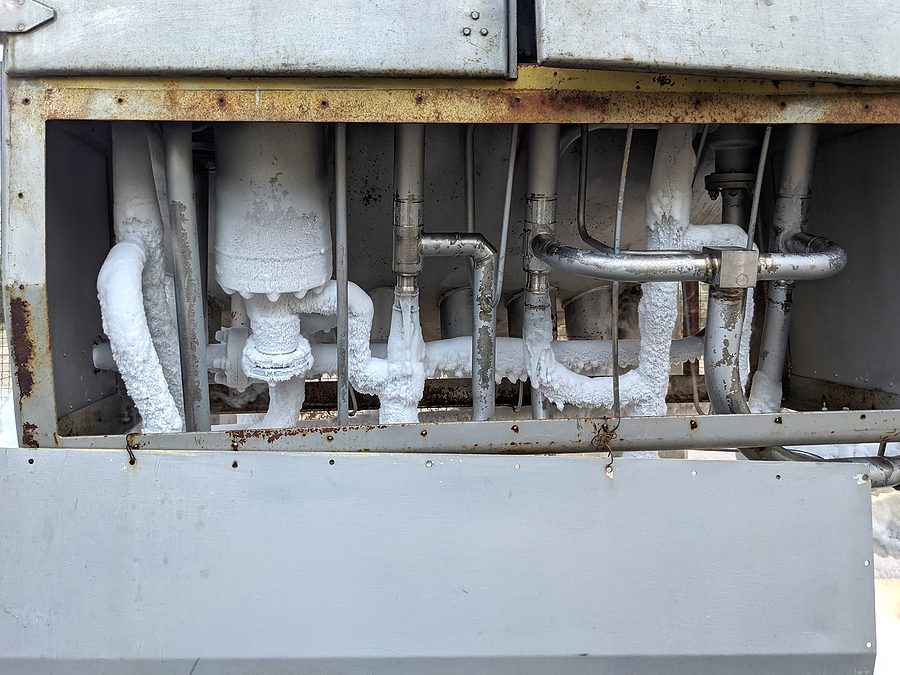
You don’t want to worry when winter storm is in the forecast. One preventative measure you may not want to skip is winterizing pipes.
Not winterizing the pipes can cause a lot of damage, create a big mess, and lead to high repair bills, especially if you are leaving a building vacant over winter.” Find out what you can do to avoid freezing pipes in your own home and how to insulate water pipes in an empty structure.
Why Do I Need to Winterize Pipes?
Winterizing pipes prepares them for the freezing temperature. This usually means wrapping outdoor pipes in insulation and taking measures to ensure indoor pipes don’t freeze.
Click here to learn more about how to winterize pipes, which is especially important for a building that will stand empty over the winter, like a cabin or seasonal business.
Any pipes that freeze are vulnerable to bursting, and this can cause catastrophic damage to your home, not to mention be pricey to repair.
How to Winterize Pipes in Your Home from Inside
Here are some of the things you can do to help prevent pipes from freezing and possibly bursting during a brutal cold snap while you’re still living or working in your home or other building:
- Insulate pipes: Find pipes located in an attic or crawl space to insulate. You can also insulate pipes with heat tape or heat cables that have thermostat controls. The best pipe insulation for you will depend on your home and the placements of your pipes.
- Seal or caulk cracks: Look for cracks that could allow cold air vent in. Pay special attention to where pipes or vents travel in and out, like dryer vents, or water pipes.
- Protect outside fixtures: Outdoor prevention of frozen pipes should also be a consideration. Disconnect your garden hoses as you winterize your home. Close your cut-off values, and drain faucets.
- Drip water: For frigid cold spells, run a small drip of hot water and cold water in the kitchen, bath, laundry areas, as well as any other faucets or spigots in the home. All it takes is a little water drip, enough to keep water flowing through the work and prevent pipes from freezing. You might also consider leaving the cabinet doors ajar for ventilation.
- Check in: If you’ll be out of the house for more than a few days, you might consider asking a friend or neighbor to periodically check to ensure all is well.
- Do not let the heat off: It can be tempting to turn the heat down (or off) when you’re not home, but doing that can be dangerous for your pipes. Make sure the heat is turned up to at least 55 degrees Fahrenheit to avoid freezing.
How to Winterize Pipes in an Empty Building
If you have a summer cabin or a seasonal business, and the building will be empty during the winter, you must take some extra steps:
- Drain the pipes: Shut off water to the building and open all the faucets. This will drain out any remaining water in the pipes so that it can’t freeze.
- Insulate: After the pipes have been drained, wrap insulation around them. That will help prevent them from freezing. You can also pour antifreeze into any fixtures such as sinks that will have a better shot at avoiding damage.
- Cut the power: If the building has been left without any heat source, cut off the power to avoid any fire hazards.
- Regular checks: If it is safe, if you or a nearby friend can visit the building, make occasional checks every few weeks to ensure there has been no damage.
Have Professionals Winterize Your Pipes
If you’re not sure how to winterize the pipes in your home, or if you don’t have time to do a thorough job, you should contact a professional. Plumbers can assist you in taking steps to protect your pipes and avoid frozen or burst pipes this winter.

